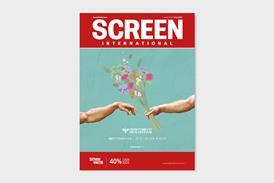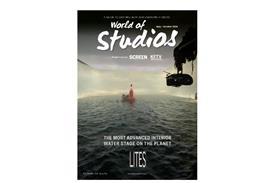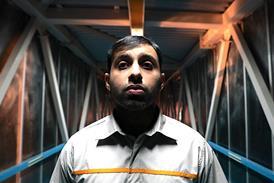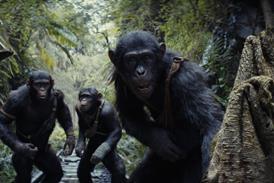Russell Carpenter won an Oscar shooting Titanic for James Cameron. But the cinematographer faced his biggest challenge yet reteaming for epic spectacle Avatar: The Way Of Water.

When Russell Carpenter first met James Cameron, he never imagined they would work together. At least, not on one of Cameron’s visual-effects-driven behemoths.
It was 1992, and they had been introduced at the 15th birthday party of actor Edward Furlong, who had starred in Cameron’s Terminator 2: Judgment Day and was at that time doing Pet Sematary Two with Carpenter. “We just sat and talked for a while about not much at all,” recalls Carpenter, who by then had worked primarily on low-budget genre pictures, such The Wizard Of Speed And Time and Critters 2: The Main Course.
“Later on, we flirted with doing an independent film called The Crowded Room, but because of certain issues that didn’t happen,” he recalls. “I told my wife, ‘Well, that’s the last time I see somebody like him!’”
Yet soon after, while shooting John Woo’s Hard Target, Carpenter received a call asking if he would like to work with Cameron on his upcoming Arnold Schwarzenegger spy epic True Lies. He was flabbergasted. “I couldn’t put myself in that box,” he says. “Couldn’t believe it. I mean, it was one of the most amazing breaks I ever got in this world.”
Ever since, Carpenter’s partnership with Cameron has pushed the cinematographer to new levels, via ascents up impossibly steep learning curves. True Lies paved the way to the notoriously difficult Titanic (“a really tricky film to make”, Carpenter understates) and now, more than two decades later, 20th Century Studios’ Avatar: The Way Of Water, the first ever film to shoot performance capture underwater. (Carpenter did not do 2009’s Avatar, he says, because Cameron “wanted to experiment with having another person working on it”, namely Italian director of photography Mauro Fiore.)
Evolving relationship
![]()
During their journey together, the working relationship has evolved from Carpenter feeling “terrified” on True Lies to something “much more collaborative”. Back in the mid-1990s, Carpenter says, “Jim still treated making a film like taking a castle. It was a siege. It was almost like you were at war.” Not anymore. “Let’s just say his management style has changed amazingly over the years. And I’ve gained quite a bit of experience. So our relationship’s just got better. It’s been a joy, even though there are tough days.”
On the Avatar sequel, many of those challenges arose from the need to shoot so much of the film in water — in 3D, no less, often at 48 frames per second, while capturing performances for Weta Digital to transform into the nine-foot-tall Na’vi denizens of alien world Pandora. This was primarily achieved between November 2017 and November 2018 at Manhattan Beach, California, where Cameron constructed gigantic purpose-built tanks, “with a moving floor and an incredible 1,000-horsepower pump”, says Los Angeles-born Carpenter.
To some degree, the cinematographer was prepared by his previous experience with Cameron. “It was like Titanic, where anything you do in water takes a long time,” he says. However, there was a significant difference. “We were shooting underwater in 3D, so all of a sudden your camera is in this gigantic monster of a big blue box. Once you get it in moving water, it has a mind of its own and takes you wherever it wants to go, rather than the other way around. So we had to devise ways to shelter the camera operator from being in the same flow of water as the actors.”
Another challenge of shooting underwater was solved before Carpenter was hired, during an extensive period of R&D. In order for Weta Digital to be able to process the subaquatic footage, it needed to be clear of the ripple effects caused by light fracturing as it hits the surface.
“It looks lovely, but it’s too much for the people who are trying to capture this,” says Carpenter. The solution was to apply a four-to-six-inch layer of ping-pong balls on the water’s surface. “It’s this huge, soft diffusion that our light has to go through, which makes the ripple effects go away. And if somebody has to get to the surface, there’s nothing blocking them.”
Worlds apart
![]()
Many of the cast and crew had to train in freediving techniques, as the bubbles released by scuba gear would have obscured the image. But Carpenter was spared: “I was sitting in a chair looking at a bank of monitors 99.9% of the time,” he says.
Instead, there were other challenges. He had to master virtual cinematography, which was new to him. Then, as the production moved to its live-action phase — based in New Zealand between April to November 2019, with further photography from June to September 2020 — he would need to light some very large-scale sets. “Len Levine, my chief lighting technician, worked out a lighting system based on rock ’n’ roll lights,” he says.
Carpenter also needed to light two very different environments: the world of the Na’vi, created digitally for the most part, and the human invaders — namely the Resources Development Administration, aka RDA — shot during the live-action phase. Each even had its own production designer: Dylan Cole and Ben Procter, respectively.
“The RDA has a totally different language of light than Pandora,” Carpenter explains. “Pandora makes you feel that, wow, this is an environment where people live in touch with nature. The RDA is the opposite. It’s stark, it’s utilitarian, and there’s a military edge to it. Some of the lighting has a very aggressive, abrasive feel.”
Furthermore, it was not just this film Carpenter had to work on. Cameron simultaneously shot the third (untitled) instalment in his sci-fi saga. This was required primarily to ensure Jack Champion, as human wild-child Spider, would not age out of his role (less of a concern with the actors who played the CGI-overlaid Na’vi). However, it gave the director and his crew another advantage: time.
“There were moments when Jim said, ‘We don’t have the technology to do this now,’” Carpenter says. “But he makes the bet and says, ‘When I’m at the place where I need the new technology, it will be there.’ That’s the way he’s always done it. He’s always said, ‘I don’t know how to make this film, but we’re gonna know when we’ve made the film.’ That’s a daring I don’t see in many people.”
Even though he is now 72 years old, Carpenter reflects on making The Way Of Water — a $1.5bn box-office hit for Disney at press time — and its sequel as another wild learning experience. “Every experience with Jim is like, ‘Okay, you’re gonna cross the Pyrenees and invade Rome.’ It’s gonna be epic, you know?”

























No comments yet